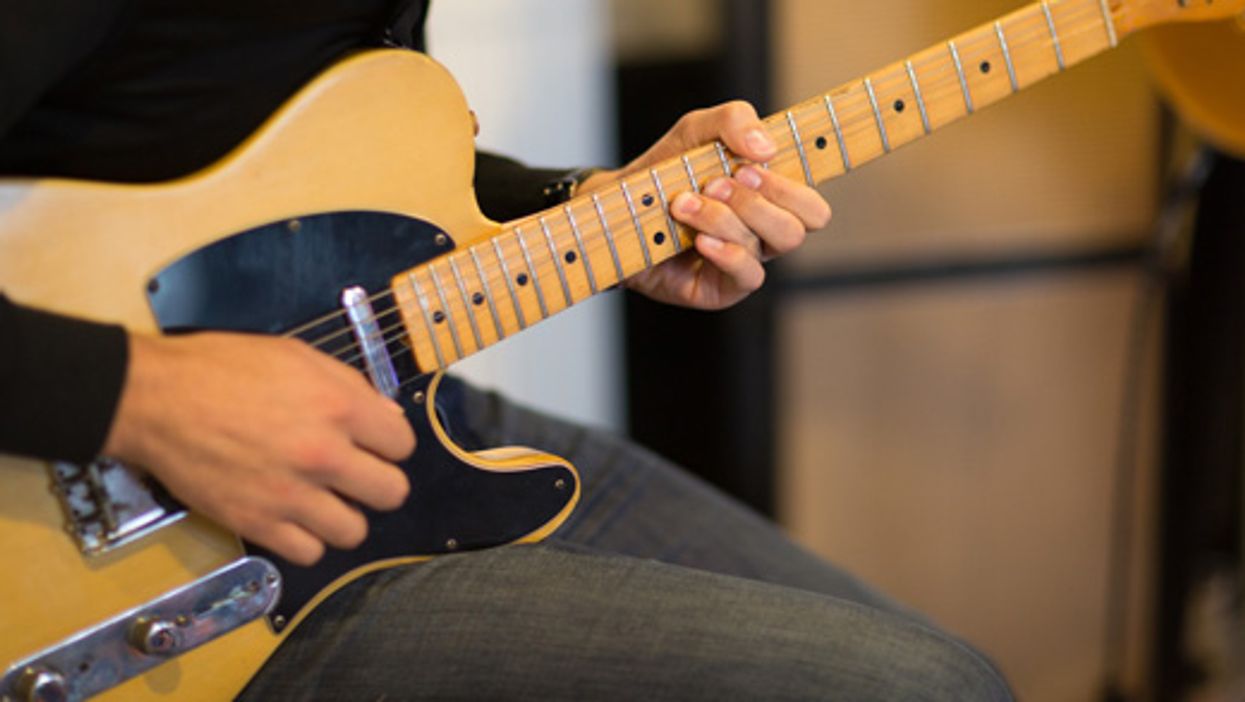Chops: Intermediate
Theory: Beginner
Lesson Overview:
• Break down a song to its bare elements—and build it back up.
• Learn how to transpose simple melodies into other keys.
• Understand how to imply harmony with single-note lines.
Click here to download a printable PDF of this lesson's notation.
These days, more guitarists are relying on loop pedals to play “solo.” They record a chord progression and then play a melody on top of it. I don’t think there’s anything wrong with that, as I count myself amongst the “loopers.” But if you really want to demonstrate your prowess as a stand-alone, one-man band I suggest you unplug the loop pedal and try some new methods of simultaneously performing the harmony and melody. In this lesson, I’ll provide you with three very different ways to approach solo guitar arrangements that fit a variety of tastes and skill levels.
At first glance the song I’ve picked to arrange, “When the Saints Go Marching In,” might seem like a corny choice, but this time-honored standard has much to offer in the way of a long-form melody with a basic I–IV–V harmony. These features allow for both simple and complex arrangements. And if this tune is good enough for Louis Armstrong, Elvis Presley, and Bruce Springsteen, it’s good enough for us.
Before we get to the solo arrangements, let’s make sure we understand the song in its most basic form. Ex. 1 is performed in the key of G with a simple boom-chuck rhythm part in the background.
Click here for Ex. 1
The first approach, Ex. 2, is a simple introduction to solo playing because it essentially lets you strum the chords and melody at the same time. First, tune your 6th string down to D, as we are transposing the melody to the key of D major. The first time we play through the melody, we’ll use a lot of open strings that will beautifully resonate with other notes we’re fretting. The second time through we’ll use natural harmonics to perform the melody with virtually no accompaniment, other than some ambient drones. This gives the arrangement a somewhat ethereal feel. Hopefully this will also satisfy fans of distorted rock guitar, as I was inspired to create this arrangement in the style of Neil Young’s recording of “Home on the Range.”
Click here for Ex. 2
Ex. 3 is probably a bit more akin to what guitarists think of as a solo arrangement. It’s a fingerstyle guitar performance in the key of C and uses Travis picking. This technique involves plucking the low strings to create bass accompaniment (usually root and 5), while simultaneously playing the melody on the higher strings, à la guitarist Merle Travis. Merle didn’t invent Travis picking, but he popularized it in the late 1940s. If you’re having trouble getting the hang of this, try practicing the parts (top line and bottom line) separately.
Click here for Ex. 3
Ex. 4 gets considerably more complex and makes evident the connection between this song and more traditional jazz. We’re now in the key of A, and the melody is accompanied by a driving bass line based on eighth-notes. Notice how the bass line often avoids the root on the downbeat and includes some hip chromatic movement. As with the previous example, try practicing the bass part separately from the melody.
Click here for Ex. 4
Hopefully this lesson will provide you with enough variations to kick start your interest in solo guitar playing. Pick your favorite song, strip it down to the bare melody and harmony, and then put it back together trying one of these methods. Good luck!
















